Rhinoceros Viper
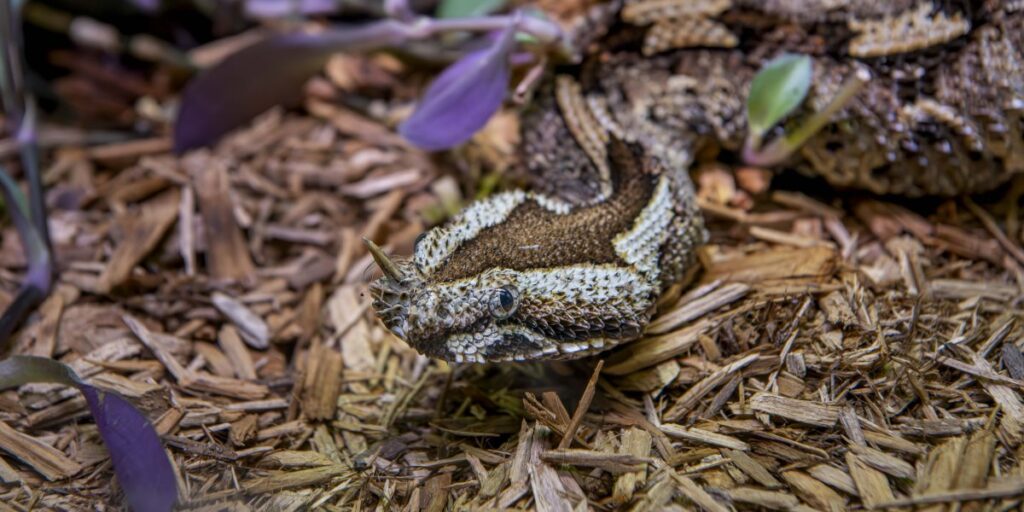
The common name for the rhinoceros viper is the river jack snake. They have distinct horn-like scales on the tip of their nose. The venom from this species is used to treat certain venomous snake bites.
Baja Blue Rock Lizard
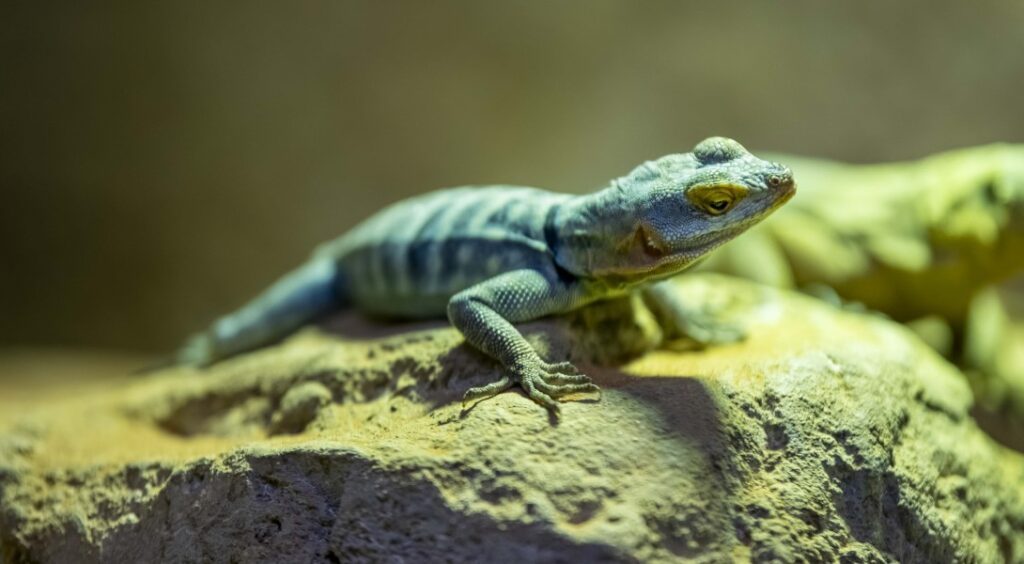
The Baja blue rock lizard is diurnal, meaning it’s active during the day. It can often be seen lounging in full sun. They’re usually found in rocky, lightly vegetated areas but also live in forests and mountainous areas.
African Spurred Tortoise
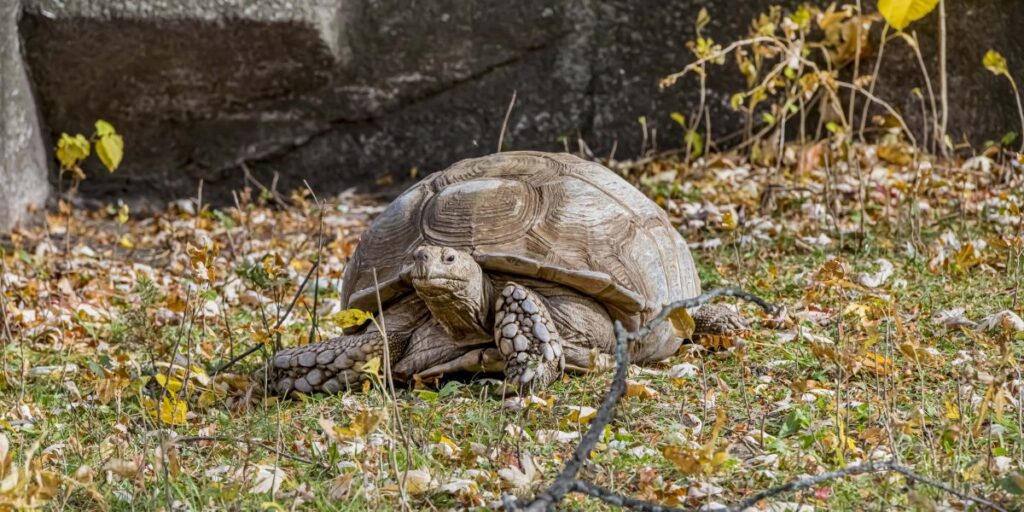
The African spurred tortoise is the largest mainland tortoise. They can reach 30 inches in length and well over 100 pounds. This tortoise can go weeks without food or water, and it can drink up to 15 percent of its body weight when it finds a water source.
Yellow-footed Tortoise
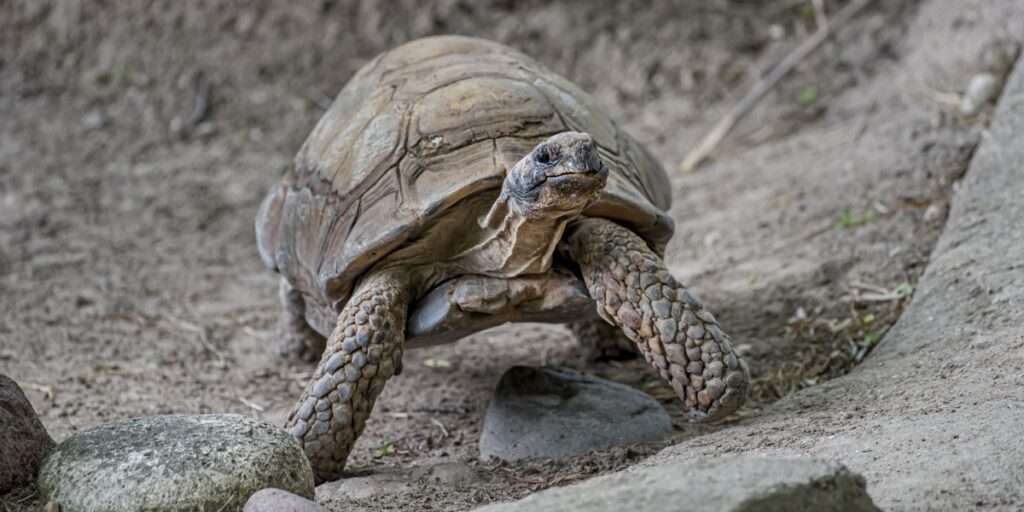
Yellow-footed tortoises are named for the yellow-orange scales on their front legs. Some scales on the limbs and tail are bright yellow. Their shell is thick and heavy and is dark brown with yellow patches.
Green Tree Python
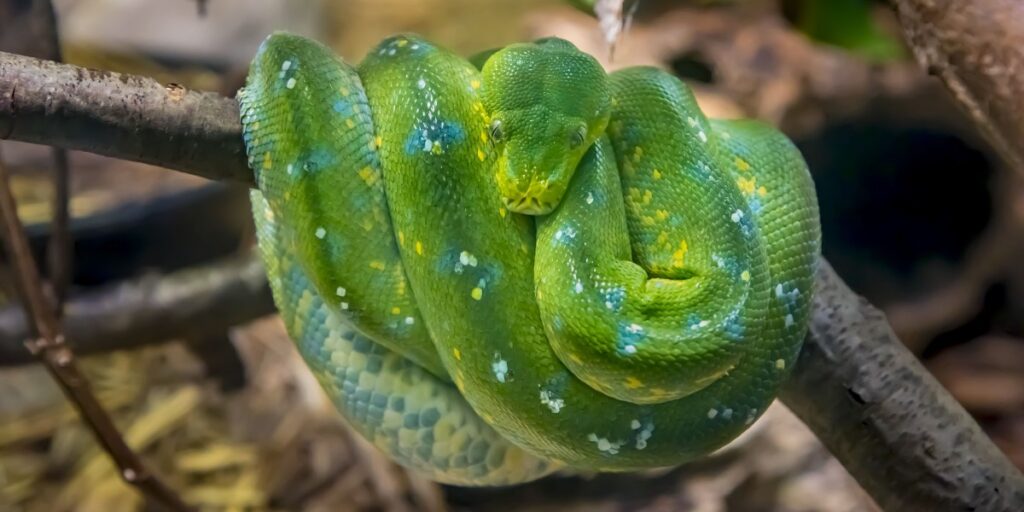
These pythons have a prehensile tail that helps them climb and catch prey. They dangle their tail to attract prey before they strike. Pythons may not need to eat for several weeks or months after having a meal.
Green Anaconda
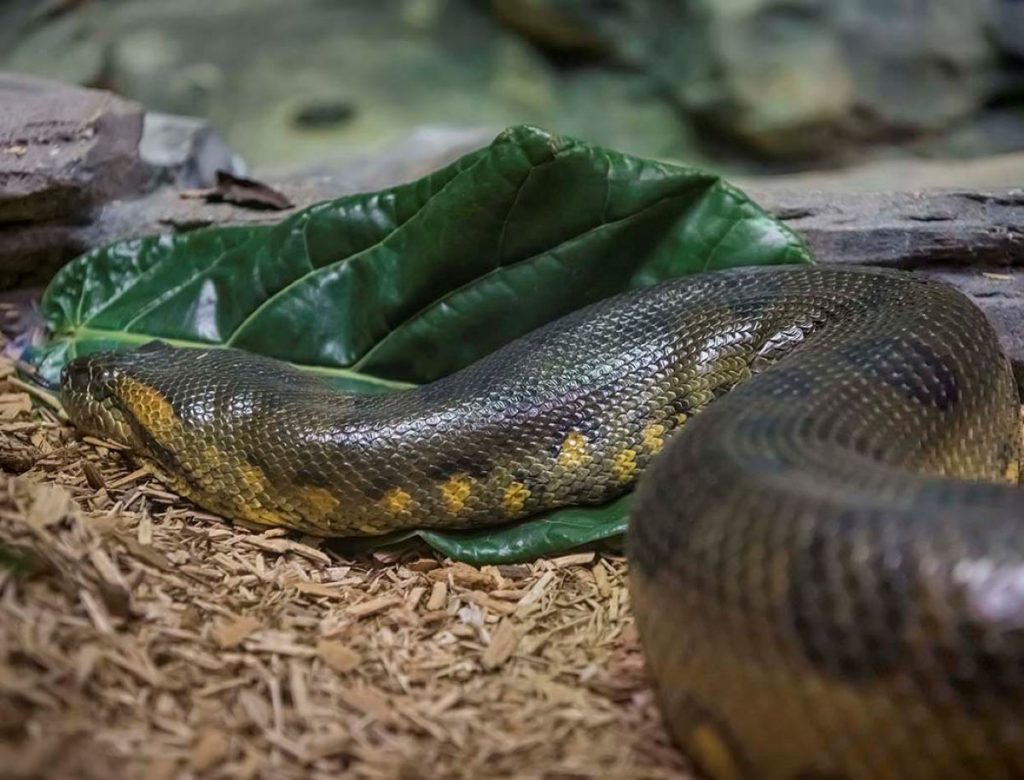
The green anaconda, also known as the giant anaconda, has a very low metabolism (like all snakes). They must rest for several days until a large meal is digested. If a meal is particularly large, anacondas may not need to eat again for several months. The eyes and nostrils on the top of their heads […]
King Cobra
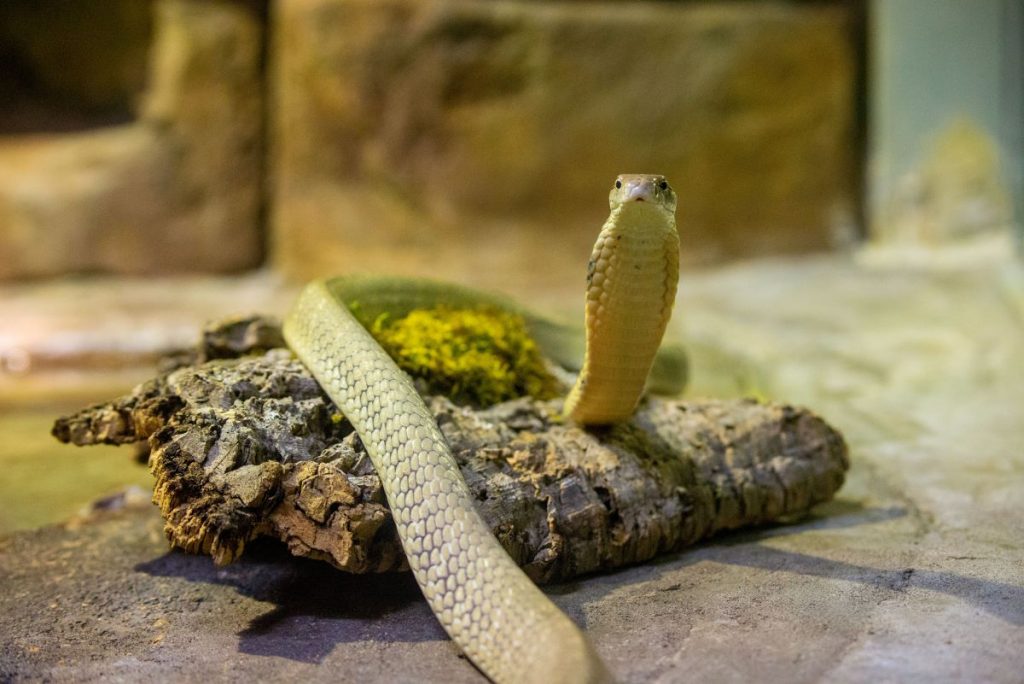
The king cobra is the largest venomous snake in the world. Despite their large size and fearsome reputation, they aren’t aggressive and will avoid confrontation when possible. When in a threat display, king cobras can raise the anterior part of their bodies 3 to 4 feet off the ground and are able to follow an […]
Chuckwalla

The chuckwalla belongs to the iguana family of animals. Chuckwallas are petite, averaging just 6.4 inches in length, but adults can reach lengths of over 15 inches. To escape predators, they take shelter in small holes and crevices, inflating its lungs and expanding its skin to wedge itself into place. The colors of a chuckwalla […]
Eastern Fox Snake
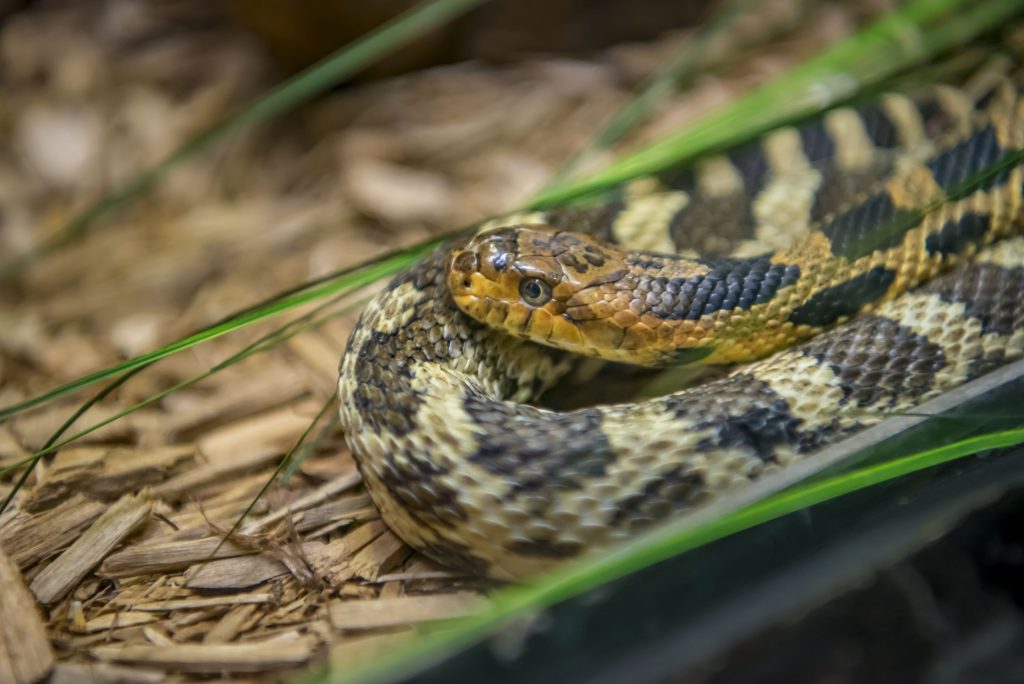
Eastern fox snakes are often mistaken for rattlesnakes, as they “rattle” their tails when disturbed. When threatened, these non-venomous, docile snakes may also give off a stinky musk from glands near their tail. This musk has an odor like that of the red fox, hence the “fox” in their name. They’re found in every county […]
False Water Cobra
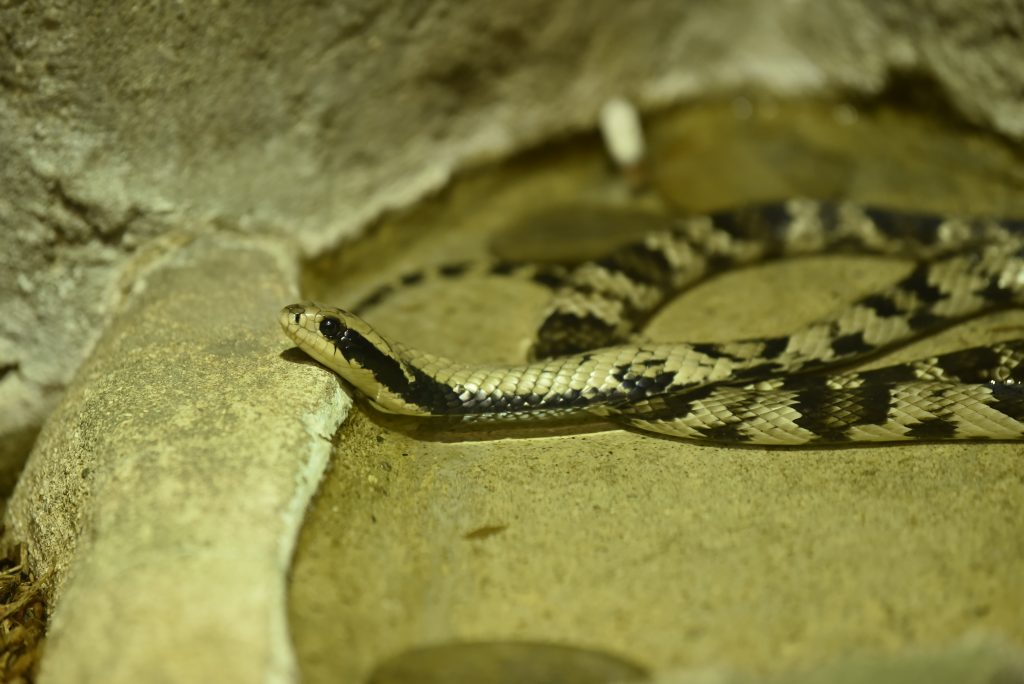
This species is named for its ability to flatten its neck to appear larger, giving the appearance of a cobra. However, unlike a true cobra, the false water cobra doesn’t prop itself up vertically but maintains a horizontal position. They hunt by grabbing and partially coiling their bodies around prey, then swallowing it live.
South American River Turtle
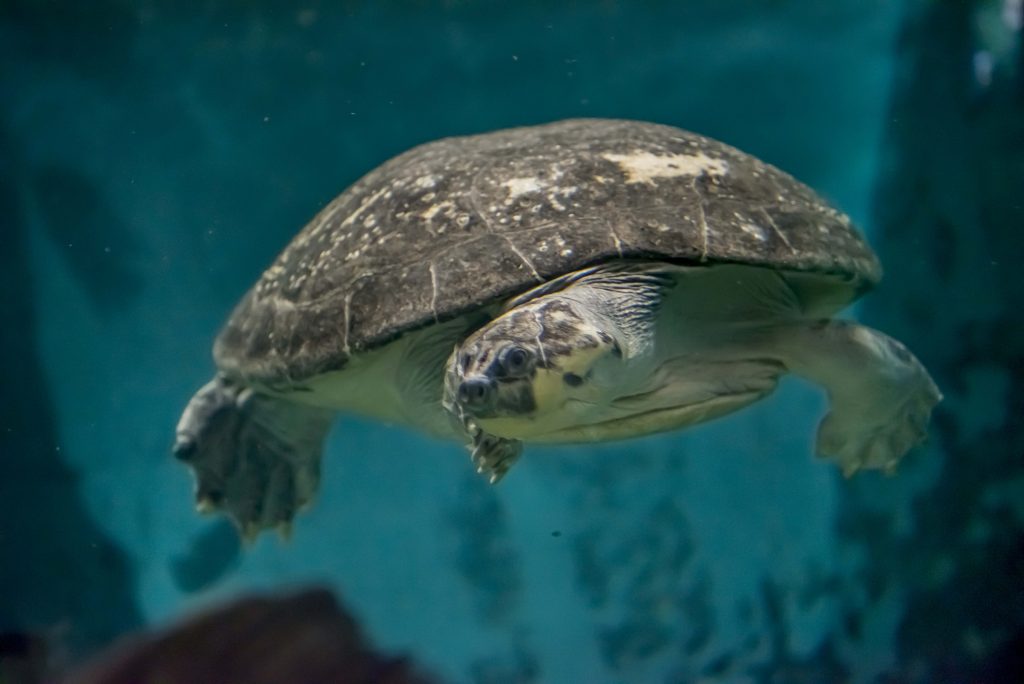
This turtle lives in the Amazon and Orinoco River systems. It’s part of the family “Pelomedusidae,” which contains the side-necked turtles. These turtles have a long neck that can be withdrawn horizontally within the shell, leaving it partly exposed, rather than retracting it in a vertical “S” bend as in most other turtles.
Chinese Alligator

The Chinese alligator is one of the smallest crocodilians and one of just two alligator species in the world (the other being the American alligator). The native name for this species is Yow-Lung or T’o, meaning “dragon,” leading some to believe that the mythical Chinese dragon was, in reality, the Chinese alligator.
Eyelash Viper
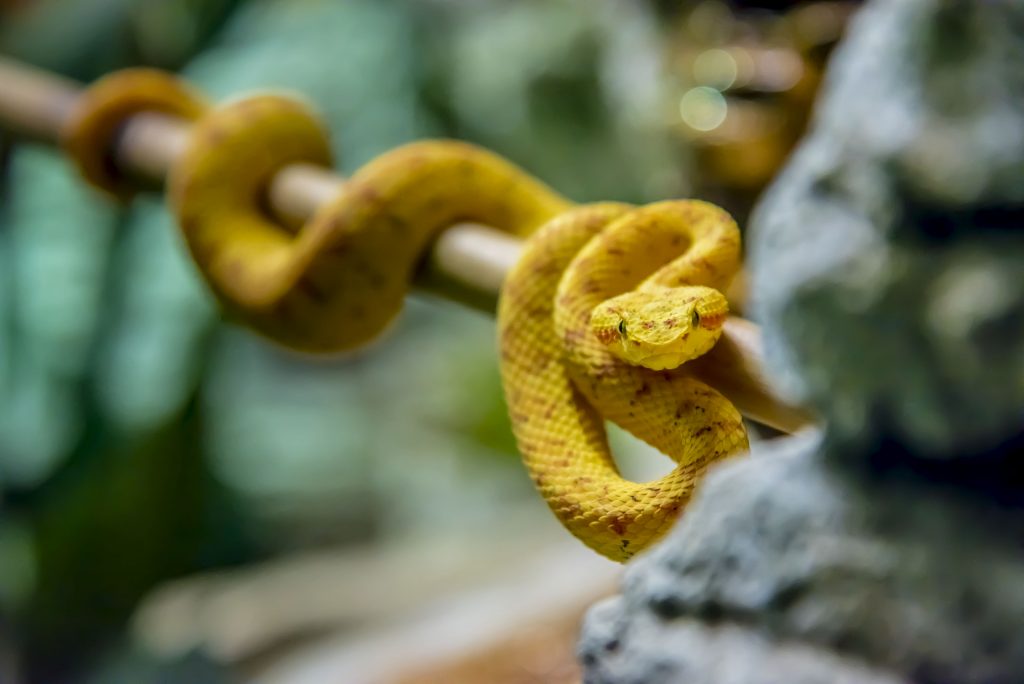
The eyelash viper’s most distinguishing feature is the supraciliare, or enlarged scale, above each eye, giving the appearance of “eyelashes.” These snakes are small and light in order to effectively maneuver through shrubs and trees and avoid detection by prey. It moves readily between the forest ground and canopy and is often found in banana […]
Fly River Turtle
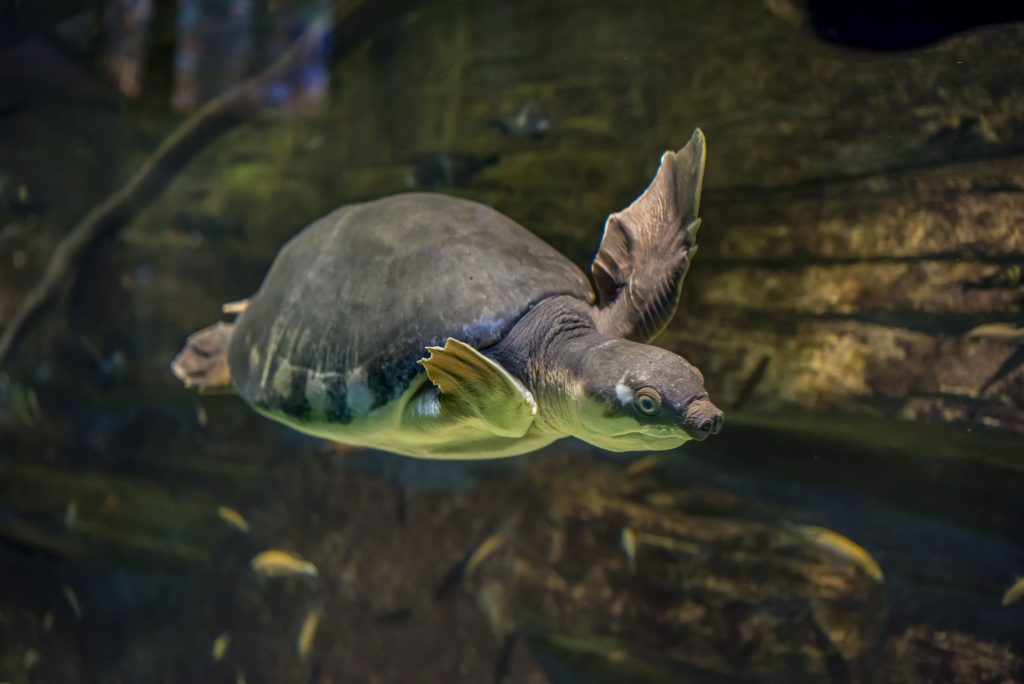
Sometimes called the pig-nosed turtle, these reptiles only leave the water to nest. They are a secretive animal, mainly hunting and active nocturnally. Its flipper-like forelimbs make it a powerful swimmer.
Gila Monster
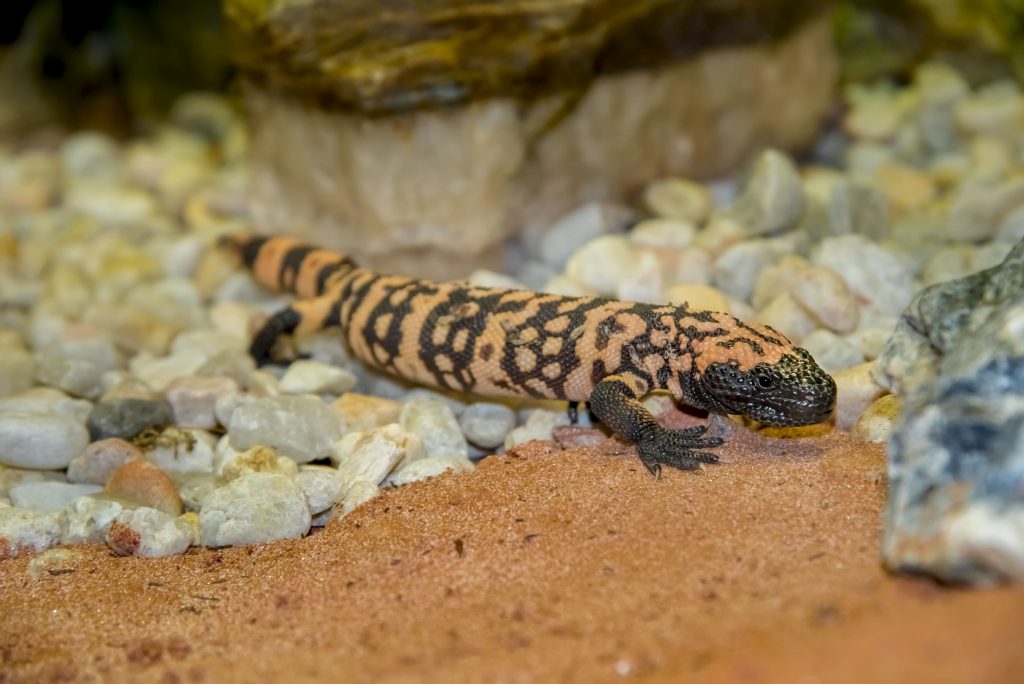
The Gila monster is named after the Gila River in Arizona and is the most venomous lizard native to the U.S. The Gila monster eats large meals infrequently, with a fat reserve stored in its tail, and can consume a meal of one-third of its body weight. They are immune to their own venom — […]
Grand Cayman Blue Iguana
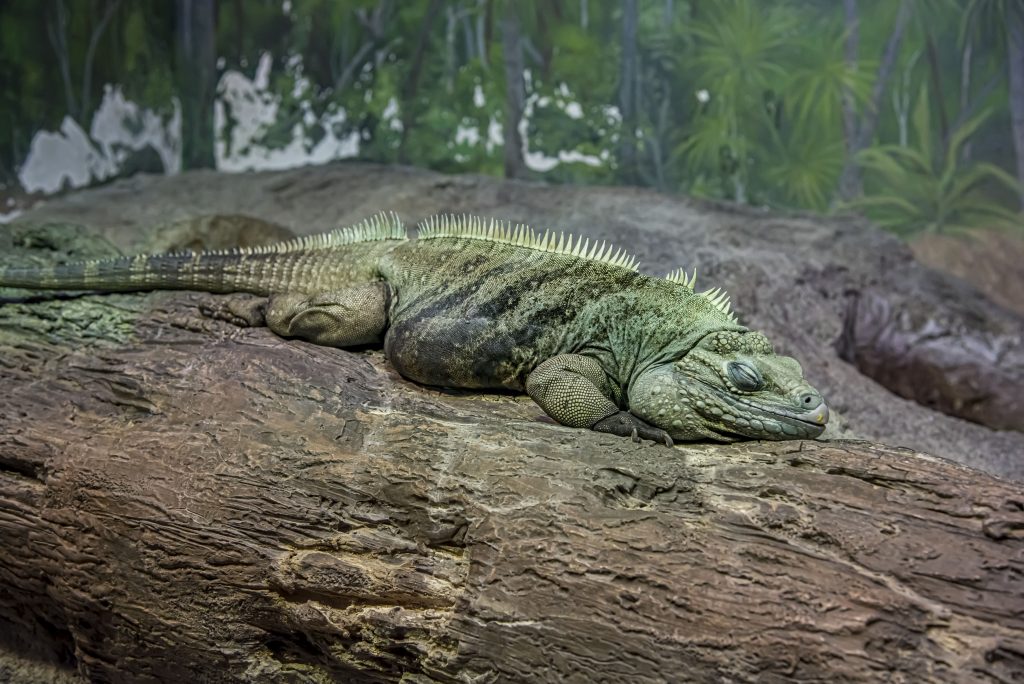
The blue iguana is a “flagship” species — essential for maintaining the delicate balance between climate and vegetation necessary for the survival of the Grand Cayman ecosystem. During mating season, hormones color the males a bright, electric blue and the females a muted powder blue.
Green Tree Monitor
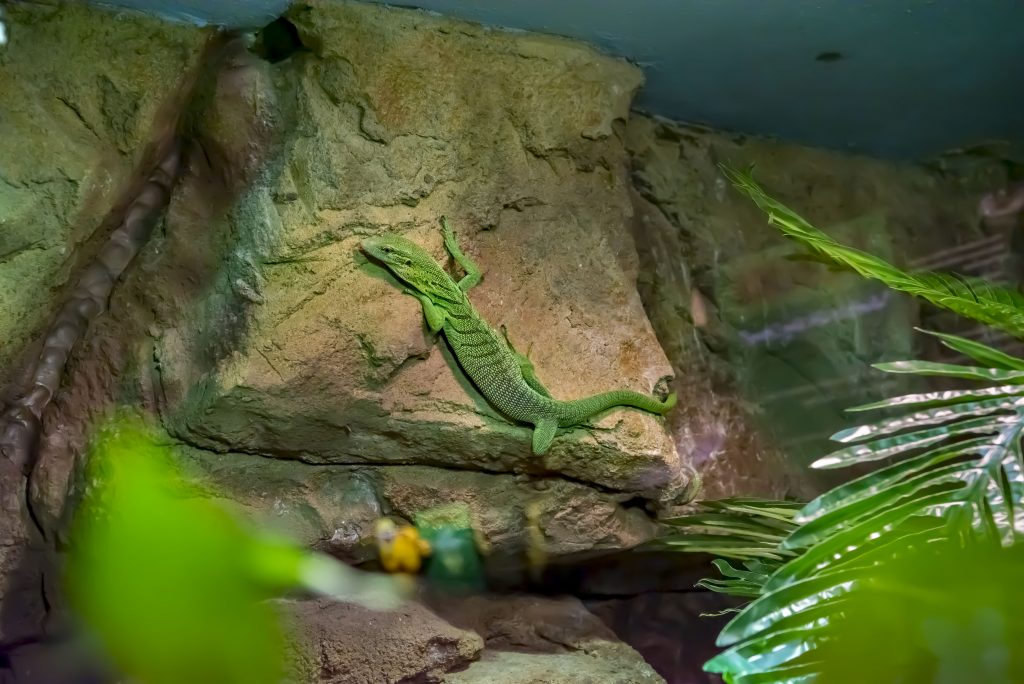
Also known as the emerald monitor, they live in palm stands and rainforests with about 70% relative humidity. The tail of the monitor is prehensile and works like a fifth foot. These reptiles sleep in branches, holding on with one or two claws and their tails wrapped around a branch.
Red-Tailed Boa
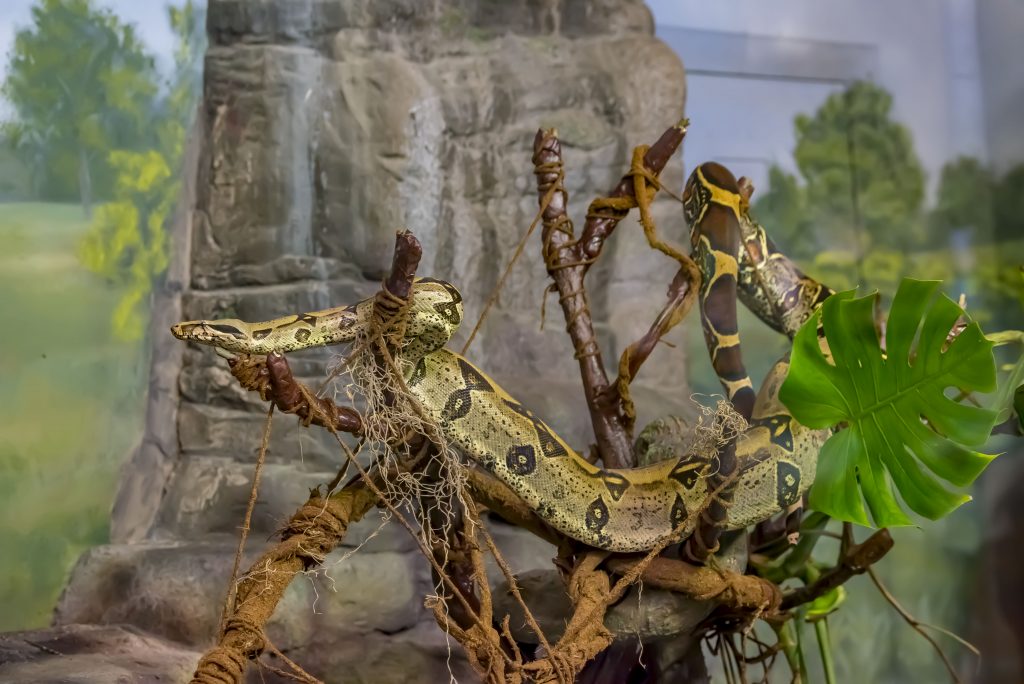
Red-tailed boas are ambush hunters; they will squeeze their prey, killing it by shutting down blood supply to vital organs and swallowing it whole. A large meal can sustain them for up to one month. They also have prehensile tails that can grip tree branches.
Timber Rattlesnake
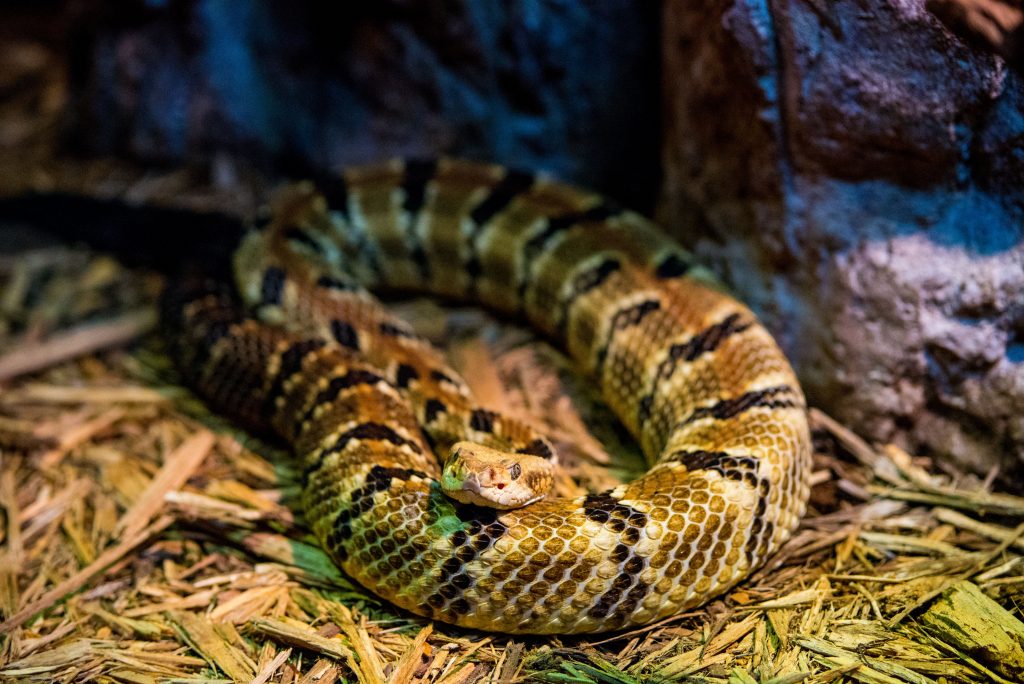
The timber rattlesnake swallows its entire prey whole, then retreats to a sunny basking site in order to raise its body temperature to 80-85°F for proper digestion. Every time the snake sheds its skin, another ring is added to the rattle.